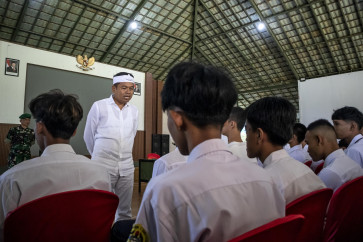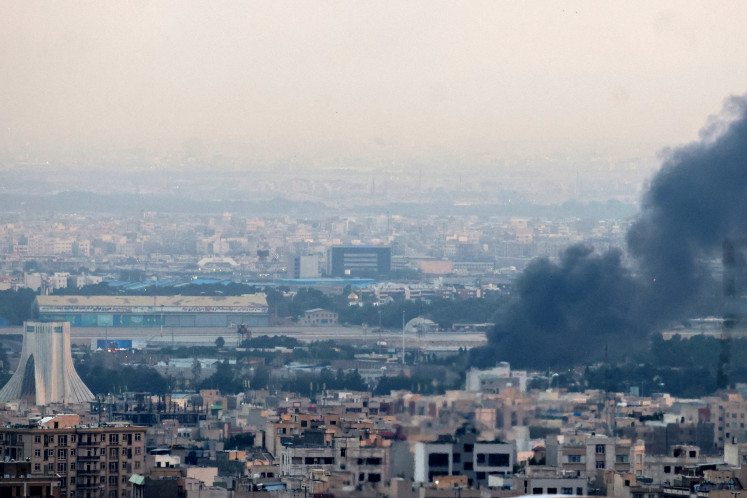Popular Reads
Top Results
Can't find what you're looking for?
View all search resultsPopular Reads
Top Results
Can't find what you're looking for?
View all search resultsOfficials warned of rove beetle outbreak
The Jakarta administration has put major public-health centers across the capital on alert following reports of a rove beetle outbreak in East Java and past outbreaks in the city’s satellite area of Bekasi
Change text size
Gift Premium Articles
to Anyone

T
he Jakarta administration has put major public-health centers across the capital on alert following reports of a rove beetle outbreak in East Java and past outbreaks in the city’s satellite area of Bekasi.
City Health Agency chief Dien Emmawati said that she had gathered the heads of all 44 public-health centers in relation to the possible outbreak in the capital.
“I have given them two orders in relation to the outbreak. The first is to educate the residents of the outbreak, prevention and first-aid treatment,” Dien said at City Hall on Tuesday, adding that health centers have also been ordered to prepare medicines to treat insect bites.
An outbreak in Pakuwon City’s residential areas in Surabaya, East Java, has seen around 50 residents treated for skin irritation caused by the rove beetle, known locally as tomcat. Skin irritations resulting from contact with the beetle’s toxins can become severe if left untreated.
Secreting toxins is the beetle’s defense mechanism against predators.
The toxin can cause reddening of the skin and a burning sensation, followed by painful irritation and itching with extensive pus-filled blistering of the skin after a few days. In severe cases, the affected areas remain irritated, blistered and sore for 10 days.
The Health Agency deployed officials in five municipalities and one regency to monitor the situation.
“So far, we have found and received no reports of beetle-related skin rashes and irritation,” Dien said.
Dien said immediate treatment was similar to that for bee stings. “Skin exposed to rove beetle toxins should be washed immediately with clean or soapy water,” she said.
Bekasi regency, which borders Jakarta, confirmed there were also recent outbreaks in the area.
There were two reports in Bekasi last year. The cases were the only ones recorded in West Java in the last five years.
Separately, Jakarta Maritime and Agriculture Agency chief Ipih Ruyani said the agency has also deployed officials to check for the beetle.
“In general, the capital is safe because major rove beetle infestations usually occur in farming areas. Jakarta is not an ideal home for the beetle,” Ipih said.
The rove beetle was predator for insects in rice paddies that benefited farmers, she said. “The beetle will not attack when not threatened or disturbed. However, its small size enables it to sneak and hide in corners of houses,” Ipih said. Residents are advised to keep their surroundings clean, as the beetle could live in dirty towels, clothes and bed sheets.
The rove beetle is less than 1 centimeter long with a black head and orange/red thorax. The body is mostly black. It has a distinct broad orange/red band near its tapered tail.
During the day, rove beetles can look similar to ants on the ground. At night, they are attracted to light.
The reported cases in Bekasi happened in a new housing development. Local officials predicted that the beetles were driven out from their natural habitat and started to compete for the same habitat with humans.









